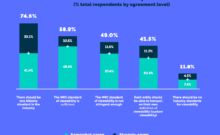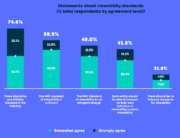Ad fraud is an issue in every country, though it is especially rampant in China .
Digital spend in China is predicted by eMarketer to grow from $40.4 billion in 2016 to $83.6 billion in 2020. But the growth may be limited by ad fraud. According to ad firm AdMaster’s stats from more than 500 Chinese advertisers, on average around 28 percent of a digital campaign’s traffic was not seen by a human being during the first half of 2016, and the number of fraudulent traffic could go up to 95 percent for some campaigns.
“There’s no single country immune to ad fraud, but unfortunately it’s a bigger problem in China,” said Ronen Mense, vp of Asia for mobile analytics company AppsFlyer.
Ad fraud can take various forms, from impressions and clicks generated by bots, to fake websites stuffed with the highest-priced keywords to attract search ads. But the most severe ad fraud practice in China occurs when ads are placed around inappropriate content like pornography and violence. Publishers and ad networks — big or small — typically use this trick when they cannot reach certain key performance indicators, according to Marin Zhang, CEO for ad verification service Adbug. Foreign ad verification companies can hardly identify “unsafe content” because some issues like food safety and anti-Japanese sentiment are specific to China, he said……READ MORE at: Original Article: digiday.com









